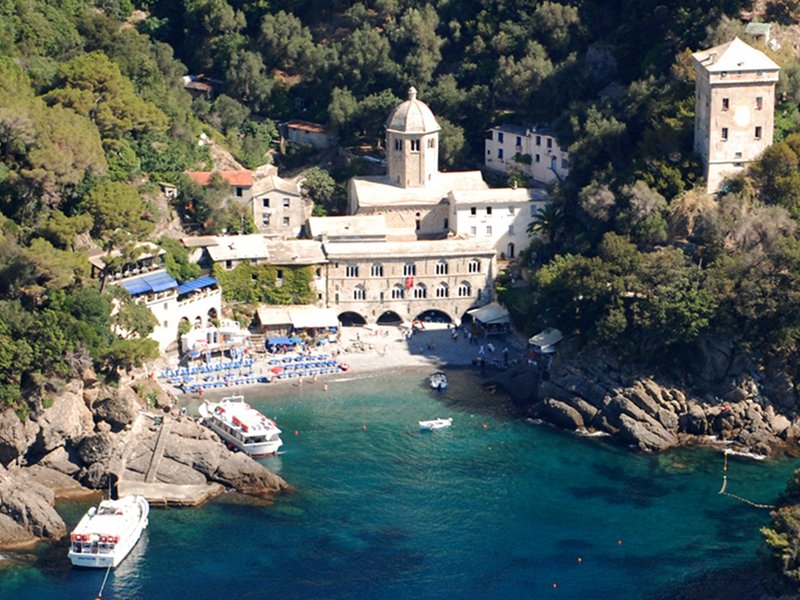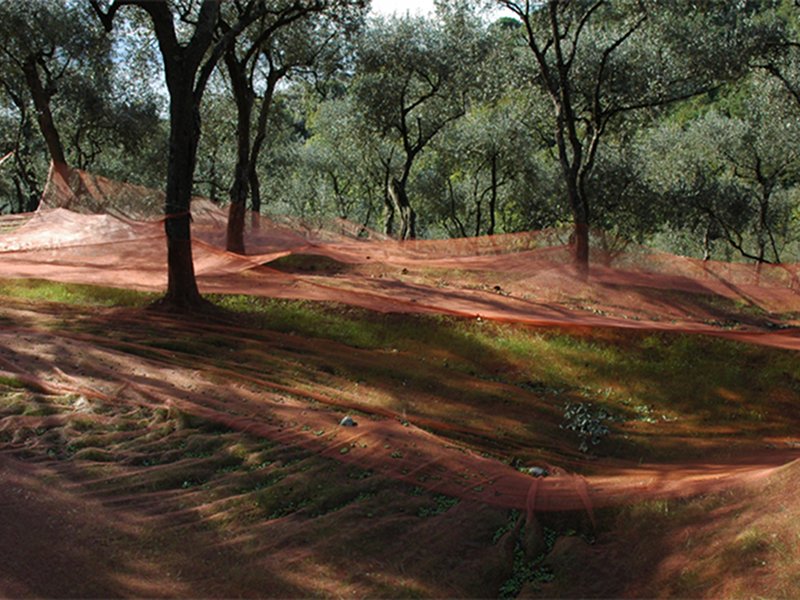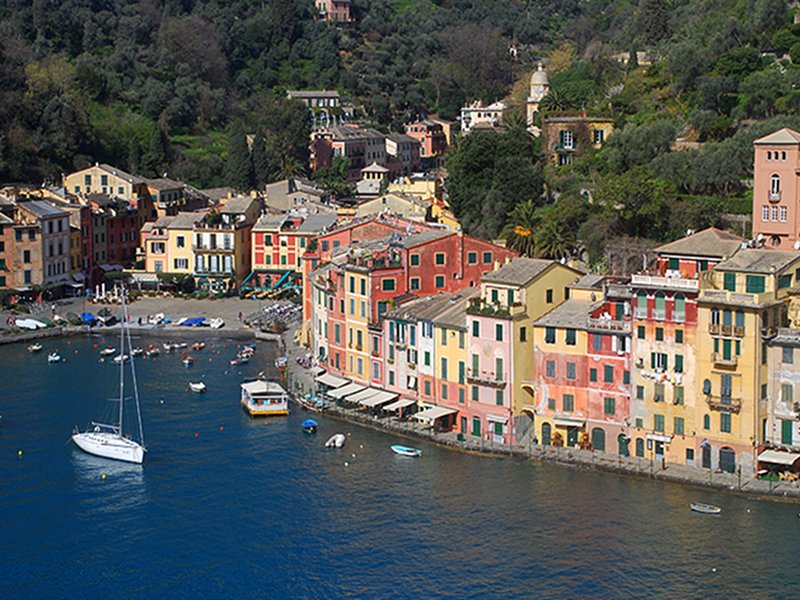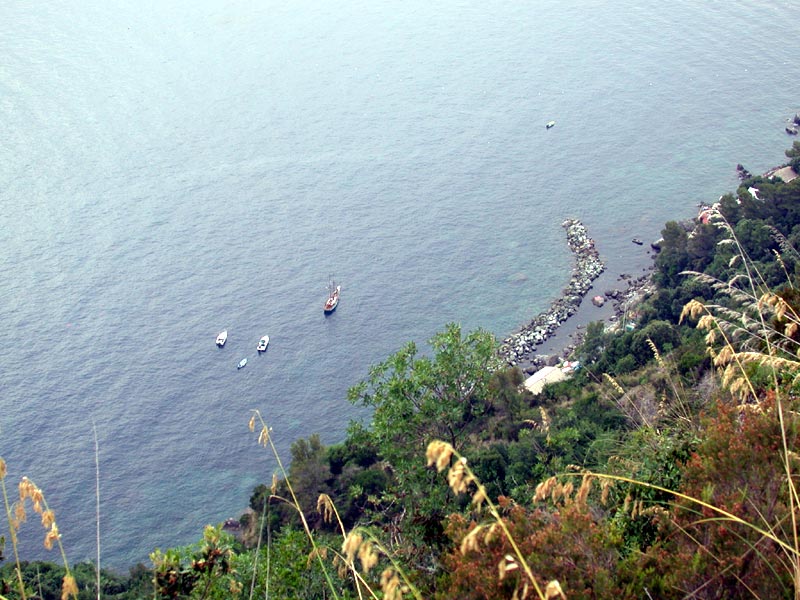Parco Naturale Regionale di Portofino
www.parcoportofino.itPoints of Interest
San Fruttuoso: The Benedictine Abbey
The first community of devotees of the martyr from Tarragona settled in the small bay at the beginning of the 8th century (but the legend moves this date back of almost five centuries) building a church which resisted to the Saracen raids until the 10th century. At the end of this century, thanks to the favors of the Empress Adelaide, Ottone I's widow, the present church was founded; in the13th and 14th centuries another part of the abbey was built closer to the sea. Protected by the Doria family, who built here one of the family graves and also built between the two districts the imposing Watchtower (16th century), the Abbey reached its greatest splendor in the 15th century. It has been the main political and economic center of the Promontory until the last century as it influenced the organization of the territory, the agricultural system, and the fishing economy.
Since 1983 the monumental complex of San Fruttuoso has become property of FAI ("Fondo per l'Ambiente Italiano") which took care of its restoration. The inlet, representing the confluence of two large valleys rich in springs, is the only landing place of the Park southern slope. Here there are an historical olive-grove and a beautiful holm oak forest.
Nozarego Olive Groves and the Valley of the Mills
The terracing ("strips") for the olive cultivation mainly stretch along the Eastern side of the Park. Still today, olive cultivation is mainly addressed to local consumption rather than to the trade. It has been associated for a long time to the cultivation of wheat, figs, and chestnuts according to a tradition based on the agricultural feudal system imposed by the monks of San Fruttuoso. Along the "Vallone dell'Acqua Viva", a peculiar integration of the production of olive trees, chestnut trees, and cereals has led to an extraordinary concentration of mills and presses (35 working factories in the middle of the 18th century). Their remains represent nowadays an important archaeological, agricultural, and industrial document.
The 'Urban' Mediterranean: Portofino
The ancient fishermen village was a natural port of strategic importance in the Roman period (Portus Delphini). It has become famous from an international point of view thanks to its extraordinary balance between urban scenario and natural environment, despite the deep changes in its social composition and primary functions. The structure of landing and village, the fence of holm oaks and Aleppo pines along the rock coast, the colored houses and the vivid gardens are the elements of this harmonious urban Mediterranean area inspiring a flourishing craftsmanship tradition, the "macramè" lace, the typical lace of the Mediterranean cultures. Among the most important monuments there are the church of San Giorgio, San Giorgio castle, and Brown castle.
The 'Wild' Mediterranean: Cala dell'Oro
The high heather and strawberry-tree forests covering the interior coastal strip represent a compact vegetation which is perfumed (heather, sea hornbeam, and myrtle), resinous (shrub, rock-roses, terebinth pistachio, and pines), colored by the scarlet fruits of the strawberry tree and by the delicate flowers of the rock-roses, often inextricable and spiny (broom and spiny spurge, rough bindweed, asparagus). It is populated by wild boars and foxes, lizards and green lizards, by the small maquis birds (especially Sardinian Warblers and Blackcaps), by the migrating avifauna (turtle doves, woodpigeons, hoopoes, and golden orioles) and by a large variety of invertebrates. Among the cliff and the maquis there are areas dominated by thyme, lentisk, and spurges. The Mediterranean pines share those lands that nature and men have reserved for them: near the sea the Aleppo pine, in the inner areas the cluster pine, and close to the inhabited centers the stone pine.
The 'Domestic' Mediterranean: Golfo Paradiso
Along the steep Western coast, from Camogli to the rocky tongue of Punta Chiappa, agricultural and sea cultures live together in a varied and colored environment, marked by a thick network of staircases, among olive groves, little vegetable gardens and citrus groves surrounded by the Mediterranean maquis and scattered with pines, figs, holm oaks, and chestnut trees. Off the small landing of Porto Pidocchio, with its "casetti" full of fishing-nets, one of the last Mediterranean "tonnare" (where tuna are produced) still works from March to September. The most important monument is the Romanesque church of San Nicolò (12th century).









